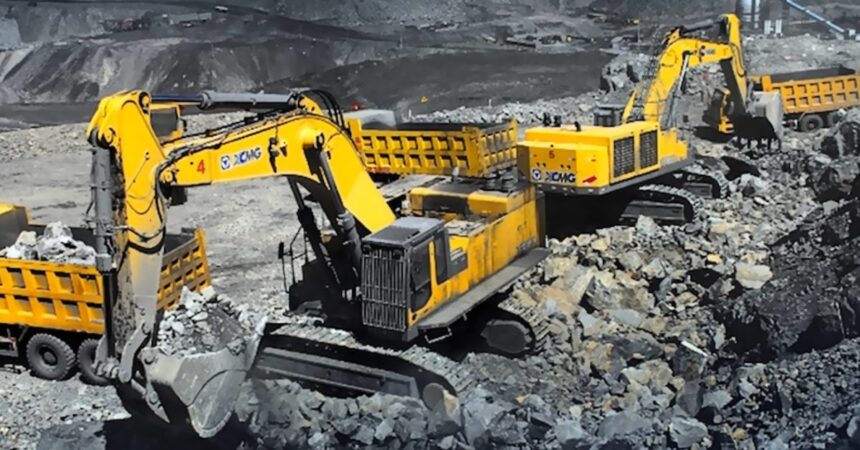Fortescue, the Australian mining company, has recently made headlines with a massive $400 million order for over 100 new electric equipment assets from Chinese heavy equipment company XCMG (Xuzhou Construction Machinery Group). This deal, the largest single equipment export deal in XCMG’s history, includes a variety of battery electric heavy equipment such as electric wheel loaders, dozers, semi trucks, and graders. These assets will be delivered to Fortescue’s Pilbara mining operations in stages between 2025 and 2030.
The use of this electric equipment is expected to displace millions of gallons of diesel fuel at Fortescue’s iron ore operations over the lifetime of the assets, contributing to a reduction in global diesel demand. Fortescue Metals Chief Executive Officer, Dino Otranto, stated that the company is committed to decarbonizing its operations and eliminating terrestrial emissions by 2030. This initiative involves replacing hundreds of diesel mining equipment with zero-emission alternatives.
The primary product of Fortescue’s mine, iron ore, has broader applications beyond electrification, making this electrification project one of the most significant in the industry. XCMG, in response to the growing demand for green technology, is embracing electrification across its product lines. The company’s Chairman, Yang Dongsheng, emphasized the importance of sustainable development and offering green solutions to customers.
With pressure to reduce carbon emissions mounting, the mining industry is racing to bring practical, electric, and autonomous heavy equipment to market. Innovative concepts showcased by companies like Hyundai, Bobcat, Volvo CE, and Caterpillar have garnered attention. Analysts estimate that heavy haul trucks can consume significant amounts of fuel annually, making the transition to electric vehicles economically beneficial in the long run.
Electric haul trucks, such as the 240-ton unit from Caterpillar, can operate without significant recharging costs in certain scenarios with high regenerative braking. The reduced maintenance and downtime of battery electric vehicles compared to diesel vehicles further add to the total cost of ownership benefits. Fortescue’s commitment to zero emissions and the adoption of electric mining equipment represents a significant step towards a greener future in the mining industry.
In conclusion, the $400 million contract between Fortescue and XCMG marks a significant milestone in the transition towards sustainable mining practices. The adoption of electric equipment not only reduces carbon emissions but also offers long-term economic benefits for mining companies. As the industry continues to evolve, partnerships like this one pave the way for a more environmentally conscious future. The world of technology is constantly evolving, with new innovations and advancements being made every day. One of the most exciting developments in recent years is the rise of artificial intelligence (AI). AI is a branch of computer science that aims to create machines that can perform tasks that typically require human intelligence, such as visual perception, speech recognition, decision-making, and language translation.
One of the key areas where AI is making a huge impact is in the healthcare industry. AI has the potential to revolutionize the way healthcare is delivered, making it more efficient, accurate, and personalized. AI-powered technologies are already being used in a variety of healthcare applications, including medical imaging, diagnosis, treatment planning, and drug discovery.
In the field of medical imaging, AI algorithms are being used to analyze and interpret images from X-rays, CT scans, MRIs, and other medical imaging techniques. These algorithms can help radiologists to detect and diagnose diseases more accurately and quickly, leading to better patient outcomes. AI-powered diagnostic tools can also help healthcare providers to identify patterns and trends in patient data, enabling them to make more informed decisions about treatment options.
In addition to medical imaging, AI is also being used in the development of personalized treatment plans for patients. By analyzing large amounts of patient data, AI algorithms can identify patterns and correlations that may not be apparent to human doctors. This can help healthcare providers to tailor treatment plans to individual patients’ needs, leading to more effective and efficient care.
AI is also being used in drug discovery, a process that traditionally takes years and billions of dollars to develop a new drug. AI algorithms can analyze vast amounts of data to identify potential drug candidates more quickly and accurately than traditional methods. This can help to speed up the drug discovery process, leading to the development of new treatments for a wide range of diseases.
While AI has the potential to revolutionize healthcare, there are also challenges and concerns that need to be addressed. One of the biggest challenges is ensuring the accuracy and reliability of AI algorithms, as mistakes can have serious consequences for patient care. There are also ethical concerns surrounding the use of AI in healthcare, such as privacy and data security issues.
Despite these challenges, the potential benefits of AI in healthcare are vast. By harnessing the power of AI, healthcare providers can improve patient outcomes, reduce costs, and increase efficiency. As AI technology continues to advance, we can expect to see even more innovative applications in healthcare that will transform the way we deliver and receive medical care.





